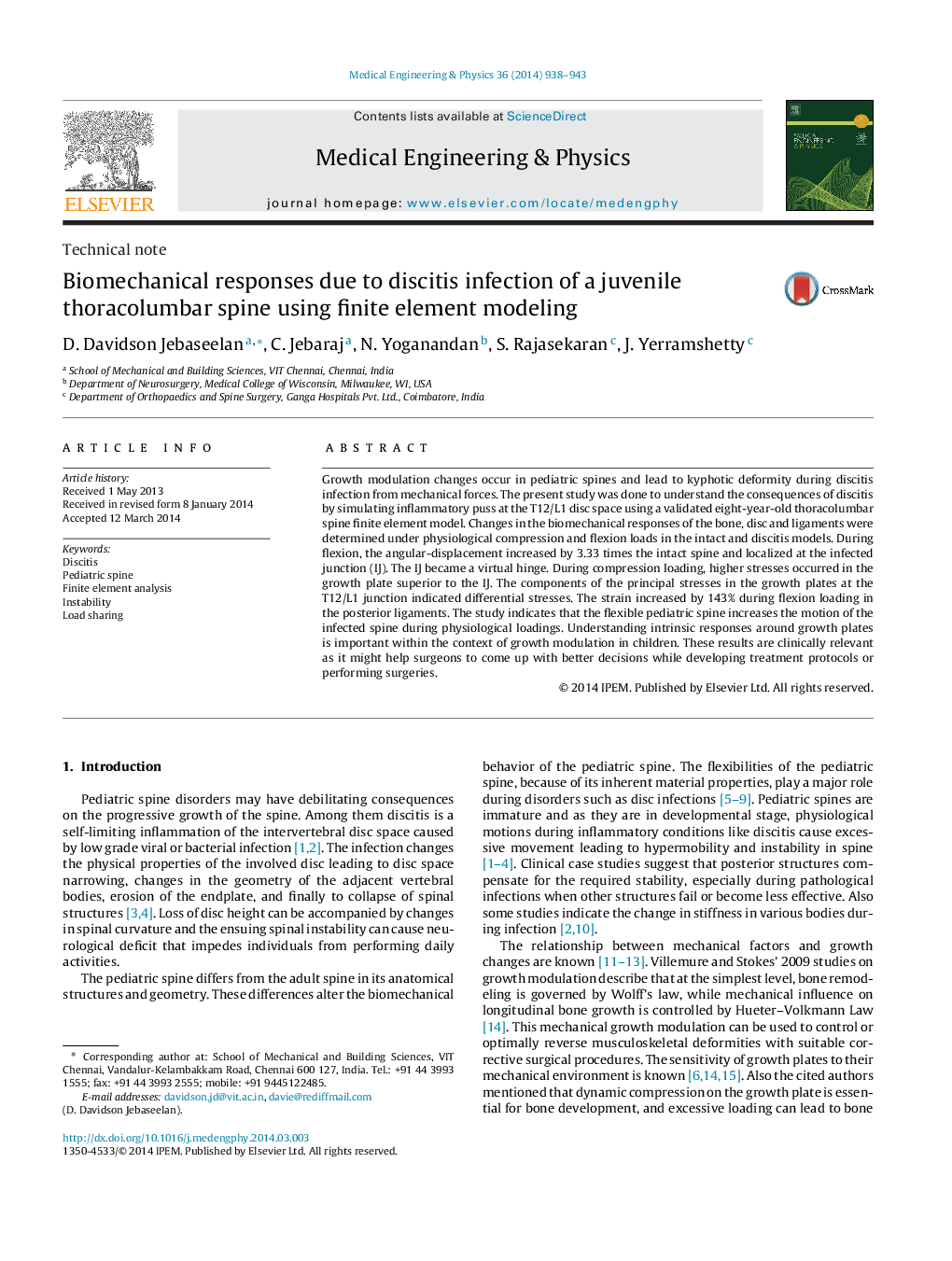| Article ID | Journal | Published Year | Pages | File Type |
|---|---|---|---|---|
| 875886 | Medical Engineering & Physics | 2014 | 6 Pages |
Growth modulation changes occur in pediatric spines and lead to kyphotic deformity during discitis infection from mechanical forces. The present study was done to understand the consequences of discitis by simulating inflammatory puss at the T12/L1 disc space using a validated eight-year-old thoracolumbar spine finite element model. Changes in the biomechanical responses of the bone, disc and ligaments were determined under physiological compression and flexion loads in the intact and discitis models. During flexion, the angular-displacement increased by 3.33 times the intact spine and localized at the infected junction (IJ). The IJ became a virtual hinge. During compression loading, higher stresses occurred in the growth plate superior to the IJ. The components of the principal stresses in the growth plates at the T12/L1 junction indicated differential stresses. The strain increased by 143% during flexion loading in the posterior ligaments. The study indicates that the flexible pediatric spine increases the motion of the infected spine during physiological loadings. Understanding intrinsic responses around growth plates is important within the context of growth modulation in children. These results are clinically relevant as it might help surgeons to come up with better decisions while developing treatment protocols or performing surgeries.
